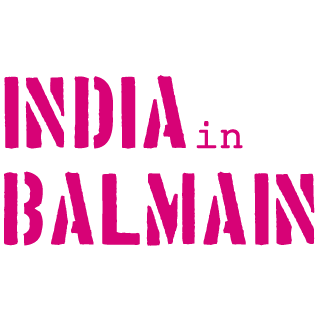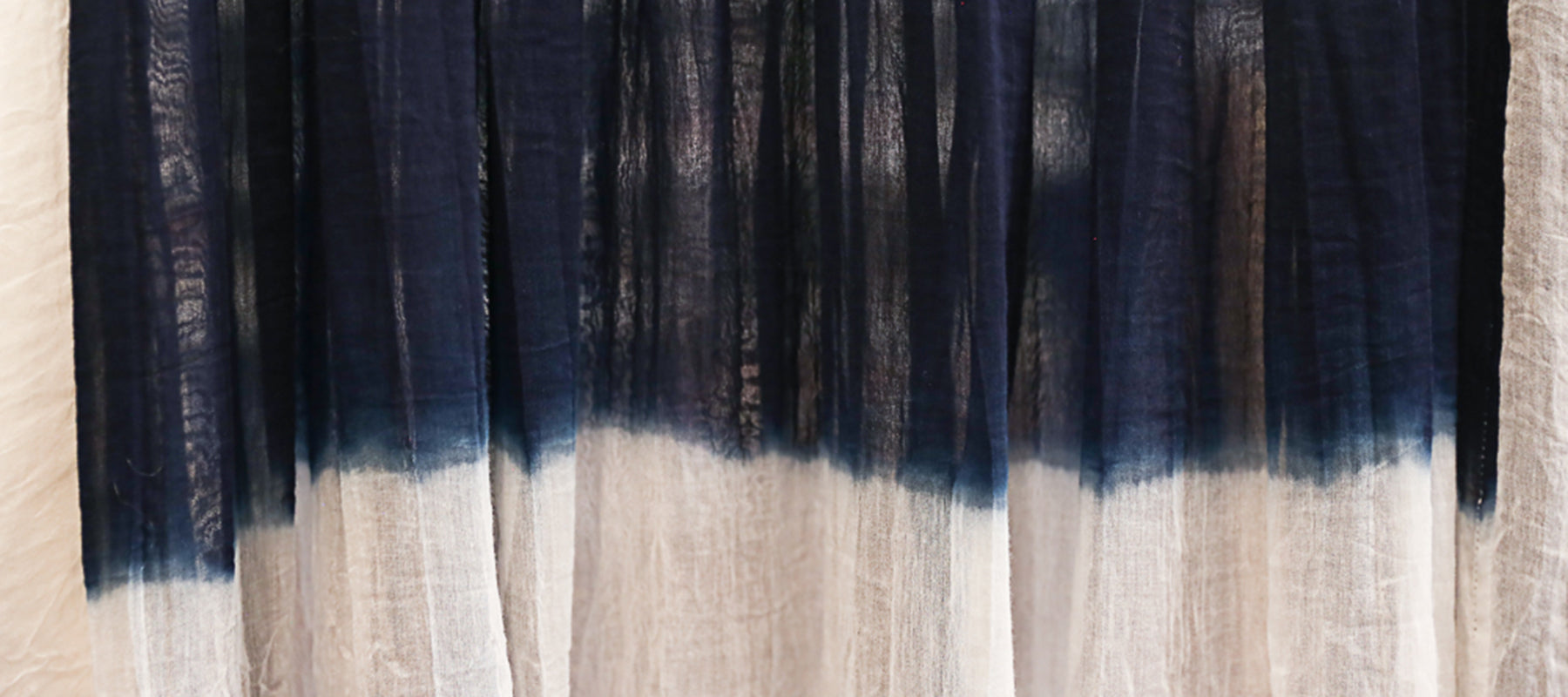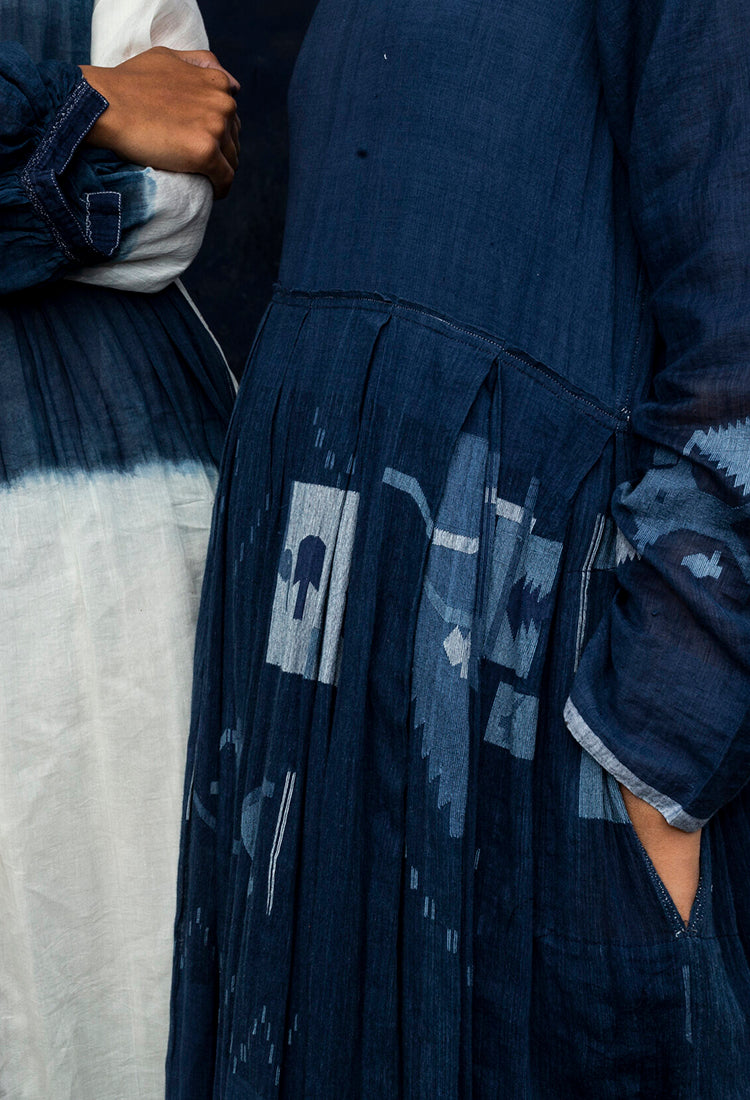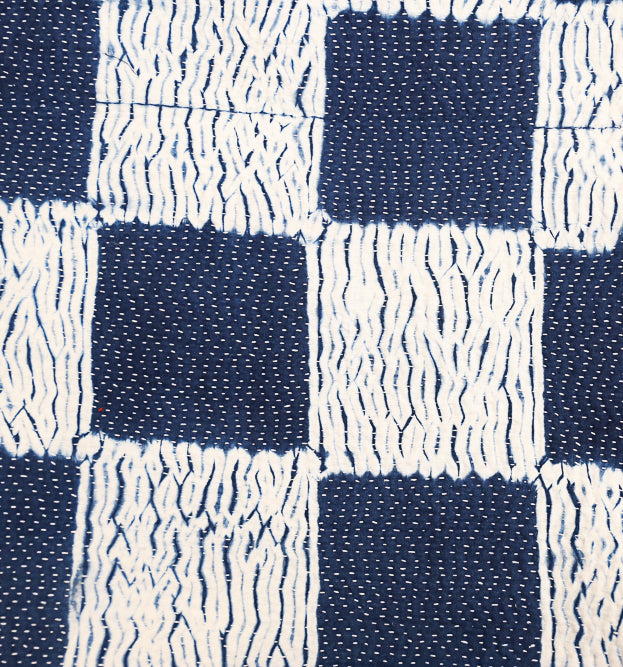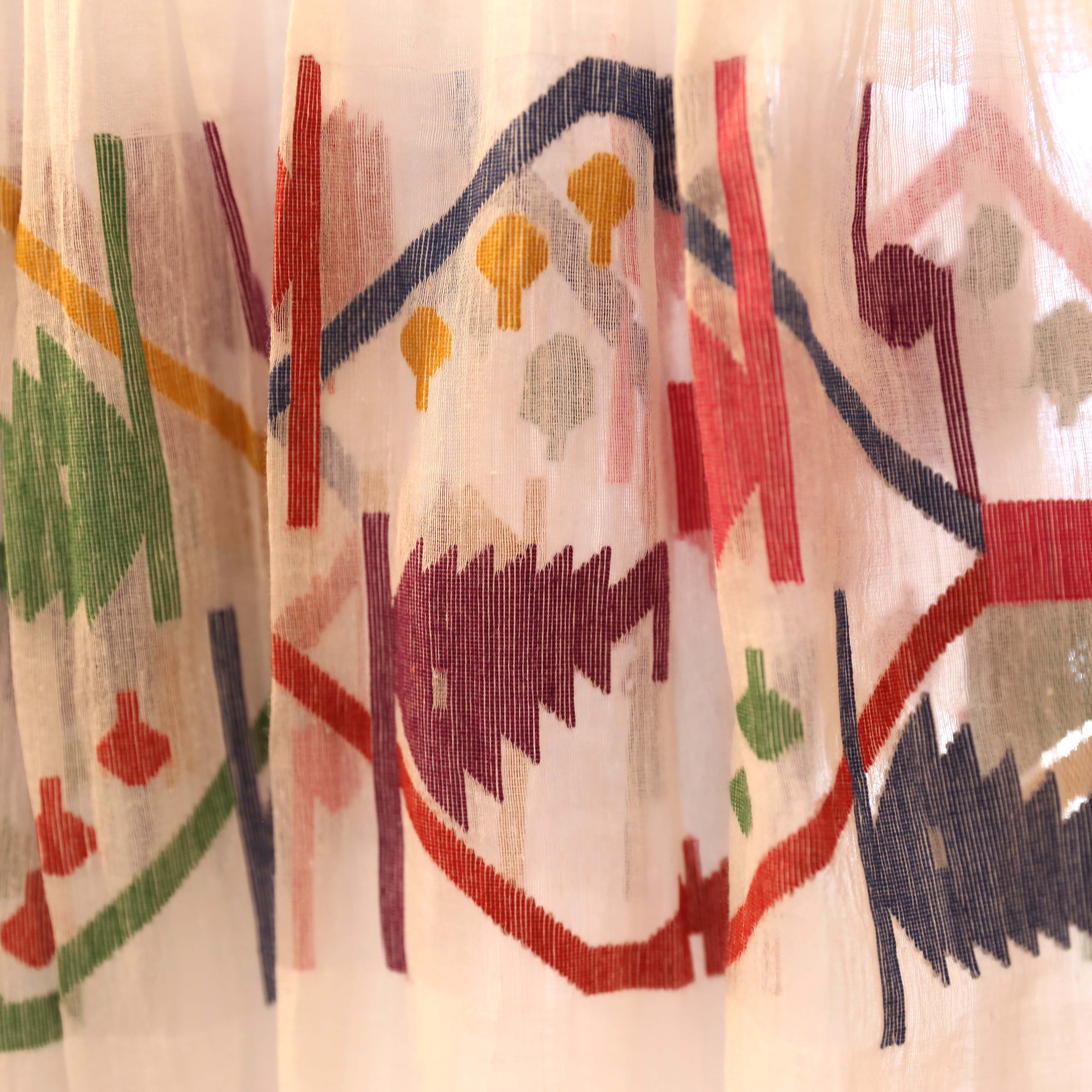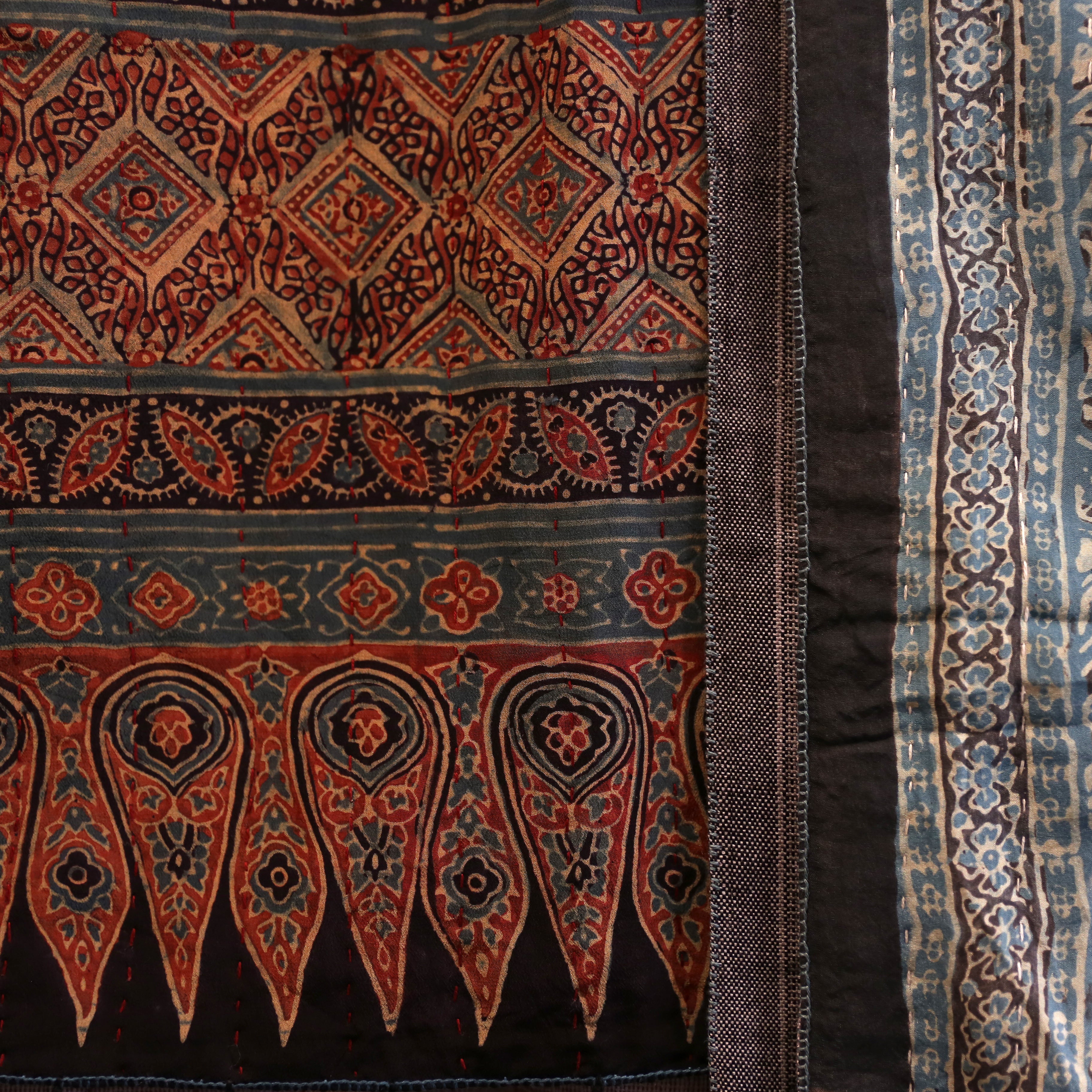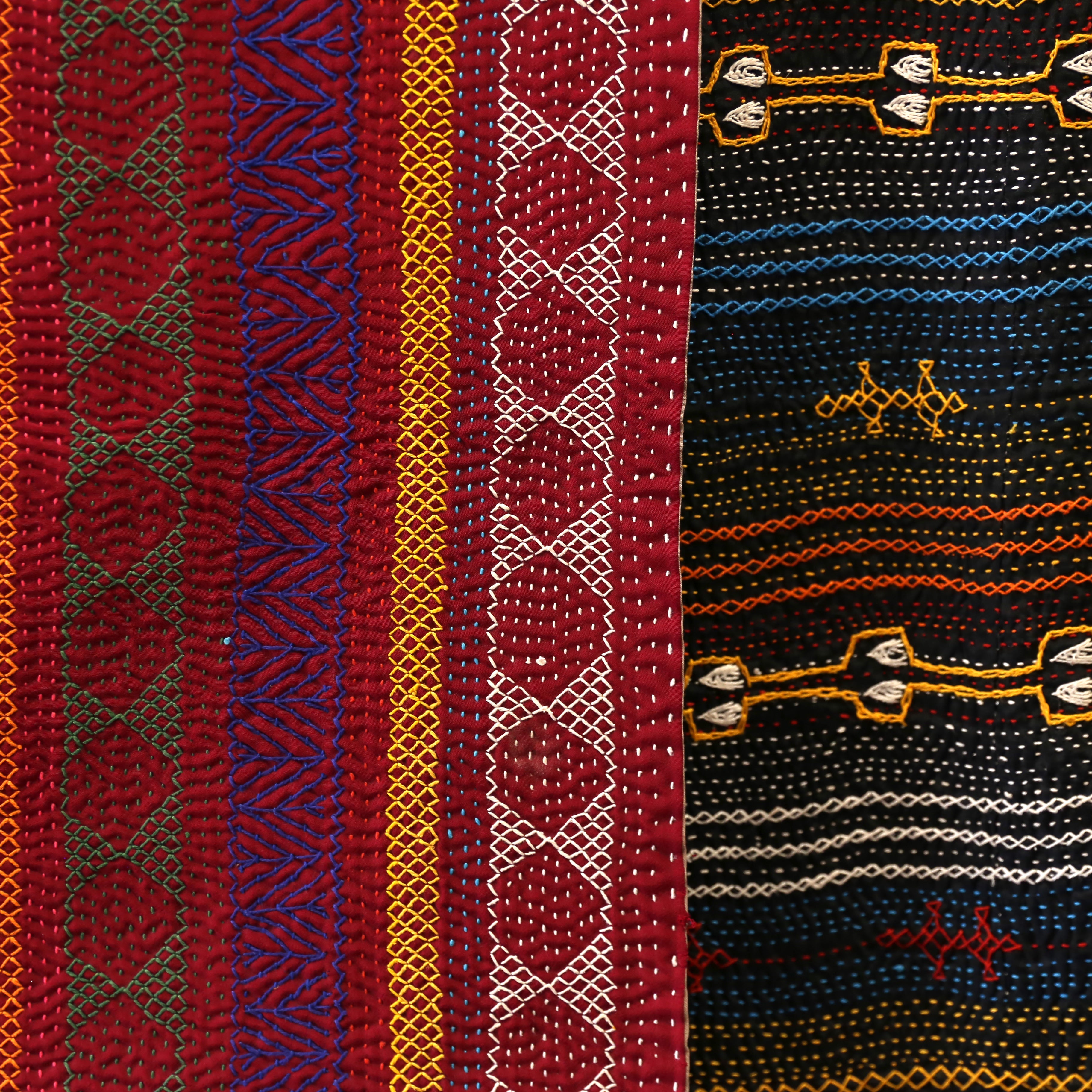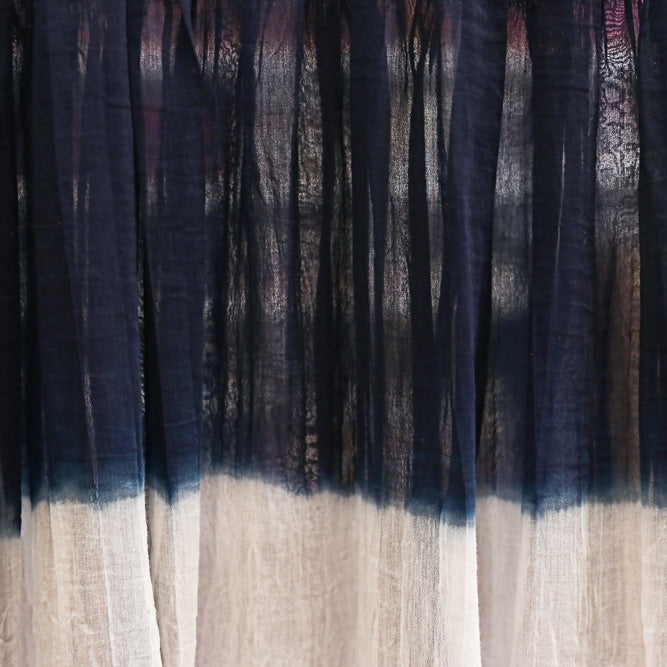Dyed ⋮ Indigo Blue Gold
Also see Indigo + Fast Fashion
The word nila in Sanskrit, means blue, specifically `indigo blue’. In parts of India, indigo is perceived as a Blue Goddess, with many Hindi Gods like Kaali and Krishna, often portrayed in the colour blue as it symbolises the colour of the cosmos.
INJIRI’S NEEL Collection, is centred around the colour indigo - a natural blue dye extracted from the Indigoerfa tinctoria plant. It has been several years in the making by Chinar Farooqui, piecing together different textiles from different craft techniques, in particular the jamdani weaving technique.
Natural indigo powder is an extract prepared from Indigofera tinctoria - a deciduous shrub to about 1 metre high. Indigo is the legendary source of colourfast blues and its ability to produce a wide range of shades has made it the most successful dye plant ever known. Indigo can give clear blues that range from the tint of a pale sky to a deep navy that is almost black.
Who, we might wonder, was able to guess that concealed within the fibres of certain green leaves lay the deepest and most mysterious blues? How the first Indian dyers in the third or second millennia BC managed to discover the secrets of transforming the unprepossessing shrubby indigo plant into a permanent, lightfast dye remains a mystery.
Indigo plants required a complicated, controlled process of days or weeks of manipulation: the careful addition of other substances (lime, wood ash, sugars, carbonate of soda etc), and the maintenance of temperatures, levels of acidity and the alkalinity to successfully convert the leaves into a dye that will permanently colour silk, cotton, linen or wool a lightfast, washable, blue.
THE INDIGO DYE VAT
As seen in northern India and elsewhere on the subcontinent, dying begins by filling a submerged vat or math a quarter full with a thick sandy dye-liquor retained from a previous batch. After mixing a variable recipe of indigo, slacks lime and molasses, th ebrew is topped with water. Over the next two weeks the rangrez (dyer), feeds the vat thesis ingredients on a daily basis until determine the dye is ready for use. Because indigo is a vat dye, it is necessary to pre-treat the fabric with a mordant in order for the dye to adhere. The fabric steeps in the vat. When removed the cloth appears green, but with exposure to the air the indigo oxidises and turns pale blue, gradually deepening with each dip.
After six months of use, craftsman empty and clean the math. This is no easy feat. To remove the accumulated sand and dirt, he must climb into this narrow tubular well that extends approximately seventeen feet (approximately 5 metres), below ground. After this arduous task, the dying cycle begins again. From: Hand Blockopedia, Anokhi Museum of Hand Printing. 2014
HISTORIAL BACKGROUND
Although the Indian subcontinent(probably the original habitat of Indigofera tinctoria) was at one time a major producer of indigo, this was principally for export purposes . Sold in the form of blocks of dried sediment, it provided a huge source of revenue for the colonial empires in the 18th century. Natural indigo was highly prized by European dyers, but production suddenly collapsed with the discovery of its synthetic counterpart at the end of the 19th century, and the indigo farms were abandoned, all the more readily because of their painful associations with the memory of colonialism. Very few blue items are to be found, in fact, in collections of Indian clothing, while the wardrobes of the Middle East, Central Asia, Chine and Southeast Asia are literally overflowing with indigo coats and dresses. (From: Indigo - The Colour that Changed the World. Catherine Legrand)
The demand for indigo had peaked at the turn-of-the-centry, and by 1914 only four per cent of blue dye was plant based. Yet the passion for indigo continued. After World War II, the rage for denim jeans reinvigorated the love of indigo n the West and had a contagious appeal that spread word wide. Now more than a billion pairs of these popular blue pants are made yearly, albeit with synthetic dye.
Natural indigo remains a rarified commodity with small quantities produced globally for a dwindling number of local communities, and an increasing international clientele, hungry for `blue gold'. (Indigo. Balfour 1998)
INDIGO THE NAME
“So many textiles are native to India that the ancient Greco-Roman world, long before it had direct trading relations wth India’s inhabitants, closely associated India with dyes and considered Indian dyers to be the masters of the art of colouring. Indikon, the origin of the English word ‘indigo’, is simply the Greek name for the Indian subcontinent. Those living along the shores of the Mediterranean evidently associated the blue dye so closely with the faraway, mysterious land that this was also felt to be the most appropriate name for the colour.” (From THE FABRIC OF INDIA edited by Rosemary Crill V & A Publishing 2015)
